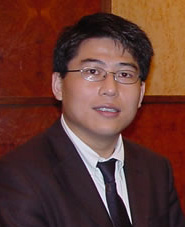"Cutting-EDGE" Research: Terminator, Confessor, Inquisitor and Enforcer
I'm leaving tomorrow for Waterloo, Canada, where I will speak at the WTO Institutional Reform Project workshop hosted by the EDGE network. At the conference, I will present a paper that I co-authored with my colleage Prof. Chin Leng Lim on "Saving the WTO from the Risk of Irrelevance: The WTO Dispute Settlement Mechanism as a 'Common Good' for RTA Disputes". Here are the first few lines of the paper:
Over the past few decades, Regional Trade Agreements (RTAs) have exploded all around the world (Warwick Report, at 45). The consensus among the trade circle now is that "regionalism is here to stay" (Baldwin, 2006, at 1508), "will [not] disappear" (Warwick Report, at 53) and "little can be done to prevent … spread of [RTAs]" (Sutherland Report, at 103). Such proliferation of RTAs created a renewed sense of urgency for the WTO to take some actions to avoid the fate of being eclipsed into irrelevance. There are several options to cope with the challenge:
The first option sees the WTO as the "terminator" of RTAs. Theoretically speaking, the best approach would be to heighten the level of ambition in global trade talks to reduce all trade barriers to zero so that the discriminatory effect created by RTAs could be reduced or even eliminated (Warwick Report, at 51). In reality, however, such approach would be impossible for well-known reasons.
The second option sees the WTO is as the "confessor". If we think of granting preferential treatments in RTAs and violating the non-discrimination principle of the WTO as committing a cardinal sin in the Religion of Free Trade, the "terminator" would wipe out those sins by eliminating the preferences. In contrast, while the "confessor" cannot wipe out those sins, he could at least alleviate the guilty feeling by reducing the negative impact of those sins. As the "confessor", the WTO's roles include first, providing objective research to help better understand the impact of RTAs on non-Members and second, setting up a negotiating forum for the coordination/standardisation/harmonisation of rules of origin, as well as third, drafting "best practices" or model RTAs to minimize the effect of further fragmentation created by different breeds of RTAs (Warwick Report, at 52). The problems with this approach are first the resource constraints of the WTO, second the political sensitivities, and third, whether the "one size fit all" approach would work.
Yet another option offered is to turn the WTO into an "inquisitor" by strengthening the existing monitoring system of the WTO on RTAs, with the 2006 rules on transparency being the most recent example (Warwick Report, at 52). Unfortunately, however, as the Committee on Regional Trade Agreements (CRTA), the main institution entrusted with the monitoring task in the WTO, has been plagued with the lack of efficiency brought by the consensus rule, any heightened monitoring rules would not be of much use either.
In this article, we will discuss the fourth option, i.e., to make the WTO an "enforcer" by using the WTO dispute settlement mechanism as a venue for resolving at least some disputes among RTA parties, and possibly even among both RTA and non-RTA WTO Members. The rationale underlying this initiative is that, by using the WTO dispute settlement system for RTA disputes, the Members will be able to develop gradually a body of "common law" on RTAs, which would then form the basis of multilateral rules on RTAs or harmonizing rules in different RTAs. This way, we can minimize the harmful effect of RTAs, and indeed turn RTAs from "stumbling blocks" into "building blocks" of the multilateral trading system.
